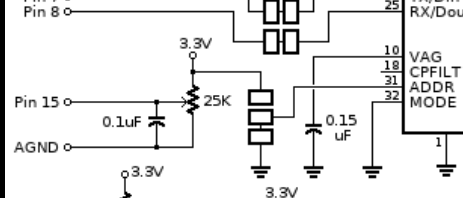JacquelineG
Member
I want to design an audio board to incorporate my personalize inputs and minimize noise through cables, so I have some questions about the design:
1. I found that there is in stock the SGTL5000XNLA3R2, that has QFN20 footprint, will it work well instead of the QFN32? What considerations do I need to take if I change it? For example, I won't be able to add this part (I am not really sure what it does the ADDR).

2. I wanted to know if the AP7313 is for 1.8V, or it is at 3.3V?
3. Can I use C0G or NP0 capacitors in the values that it is possible? Or it won’t make a difference with the X7R?
Thanks fot the help.
1. I found that there is in stock the SGTL5000XNLA3R2, that has QFN20 footprint, will it work well instead of the QFN32? What considerations do I need to take if I change it? For example, I won't be able to add this part (I am not really sure what it does the ADDR).

2. I wanted to know if the AP7313 is for 1.8V, or it is at 3.3V?
3. Can I use C0G or NP0 capacitors in the values that it is possible? Or it won’t make a difference with the X7R?
Thanks fot the help.

